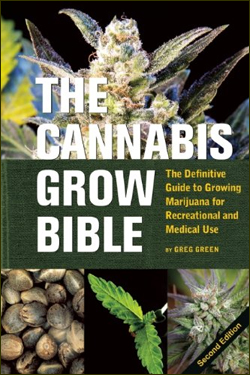
by Greg Green
Hardy-Weinberg equilibrium (part2)
If we mate two individuals that are heterozygous (e.g., Bb) for a trait what will we find? (Let’s make the punnet square).
Look at that. In this group our resulting offspring will be: 1 BB, 2 Bb, 1 bb
This means that:
25% of their offspring are homozygous for the dominant allele (BB).
50% are heterozygous like their parents (Bb) and
25% are homozygous for the recessive allele (bb).
Now look at this closely. Unlike their parents Bb Bb, 25% will express the recessive phenotype bb. So if we where given two parents that displayed golden bud but where BOTH heterozygous for that trait Bb, we would also produce offspring that have silver bud. But since Bb is dominant in both parents, neither of the parents would display the phenotype for silver bud.
This is really what breeding is all about. When we have a strain that we want to keep, how do we know that the parts we want to keep will actually be kept in our breeding process?
This is where the test cross comes in. If we create seeds from a strain that we bought in a seed-bank how can we be sure that the offspring will have the character that we like? Well the facts are this. If the trait(s) we wish to continue are Homozygous Dominant (BB) in both the parent plants then there is no way we can produce a recessive genotype for that trait in the offspring. We already explained this in the previous section.
So now we are starting to understand that in order to breed a trait properly we must know if that that is Homozygous or Heterozygous or Homozygous Recessive before we can understand what it is we are doing and PREDICT THE RESULTS BEFORE THEY HAPPEN. And this ladies and gentlemen is what breeding is all about – Understanding a trait’s genotype, predicting the outcome of a cross and LOCKING DOWN TRAITS. So how can we lock down a trait you might ask? Well we will cover this later after we understand a bit more about this subject matter.
Gregor Mendel (1822-1884) was an Austrian monk who discovered the basic rules of inheritance by analyzing results from his plant breeding research programs.
He noticed that 2 types of Pea plants gave very uniform results when breed within their own gene pool and not with one another. He noticed that the offspring all carried the same traits when they breed in with the same population or gene pool.
Now since there where no variations in with each strain he guessed that both strains where homozygous for these traits. Because the pea plants where from the same species Mendel guessed that either the Solid seed shells where recessive or the wrinkled seed shells where recessive. So he used the genotype notations (SS for solid, ss for wrinkled). He knew that they could not be Ss, because one lot did not produce any of the other strain’s phenotypes when they breed within their own gene pool.

